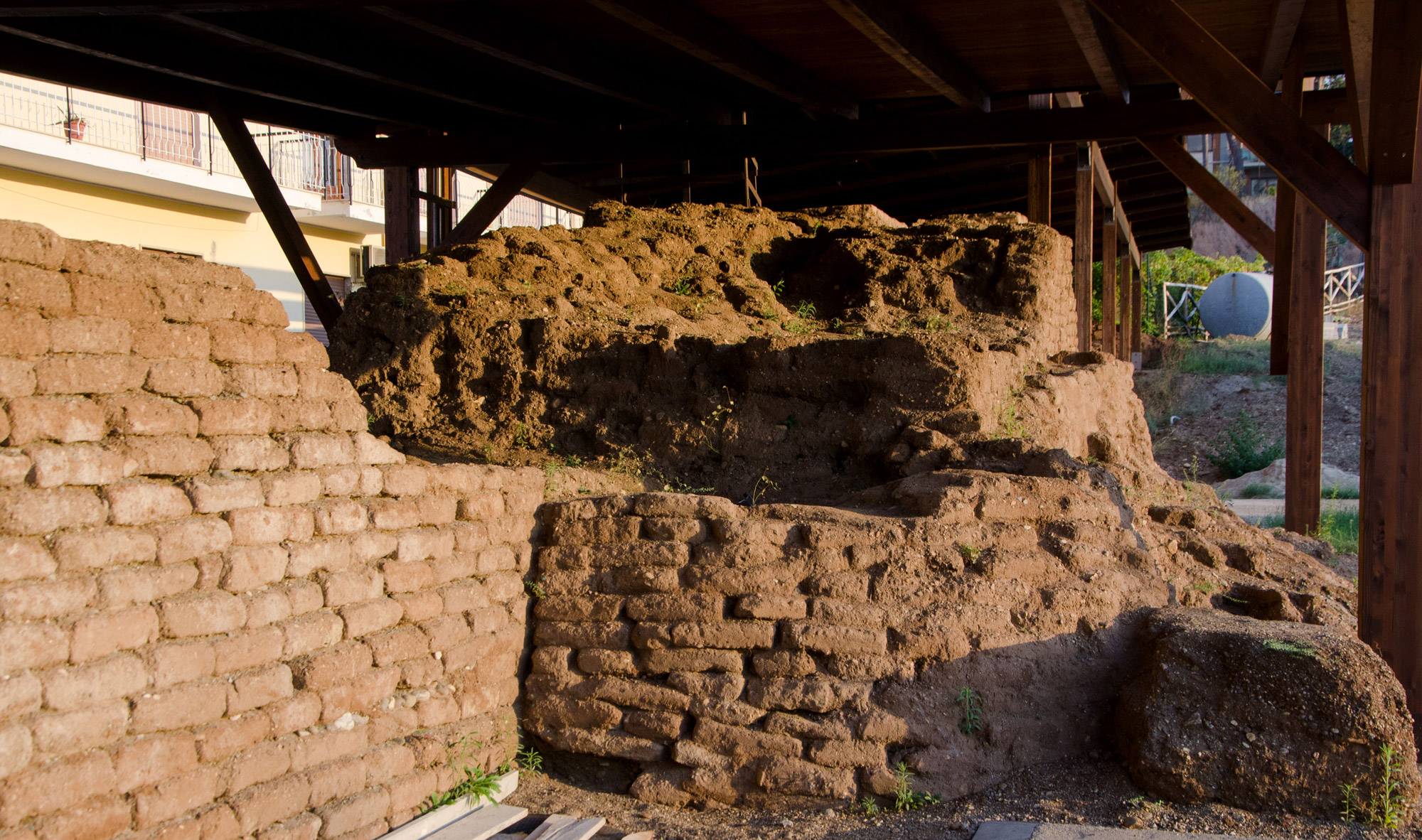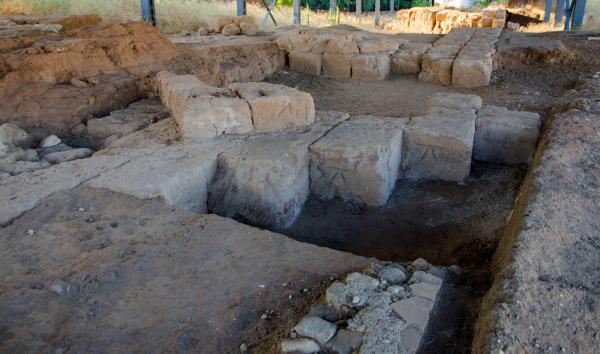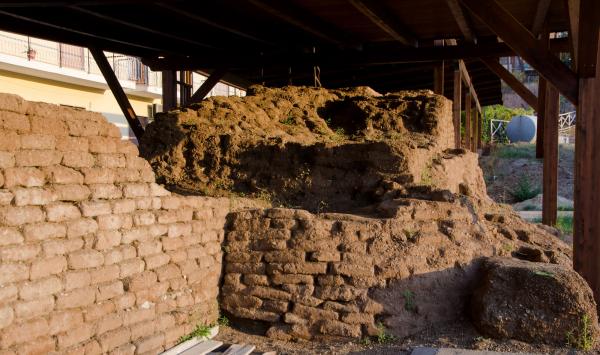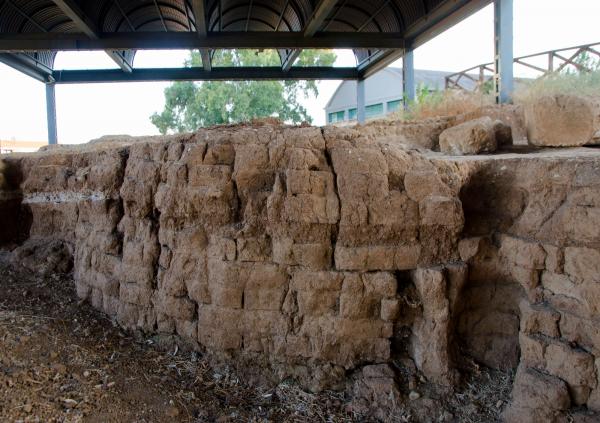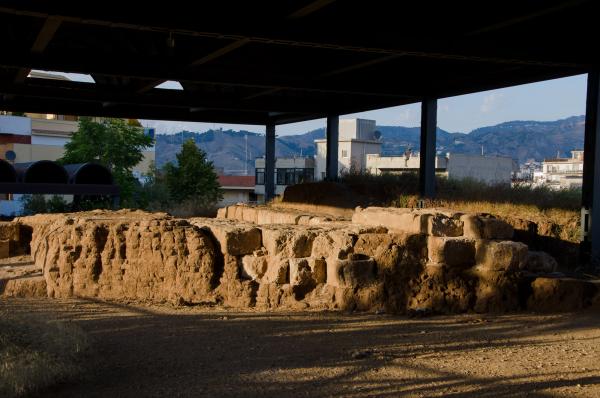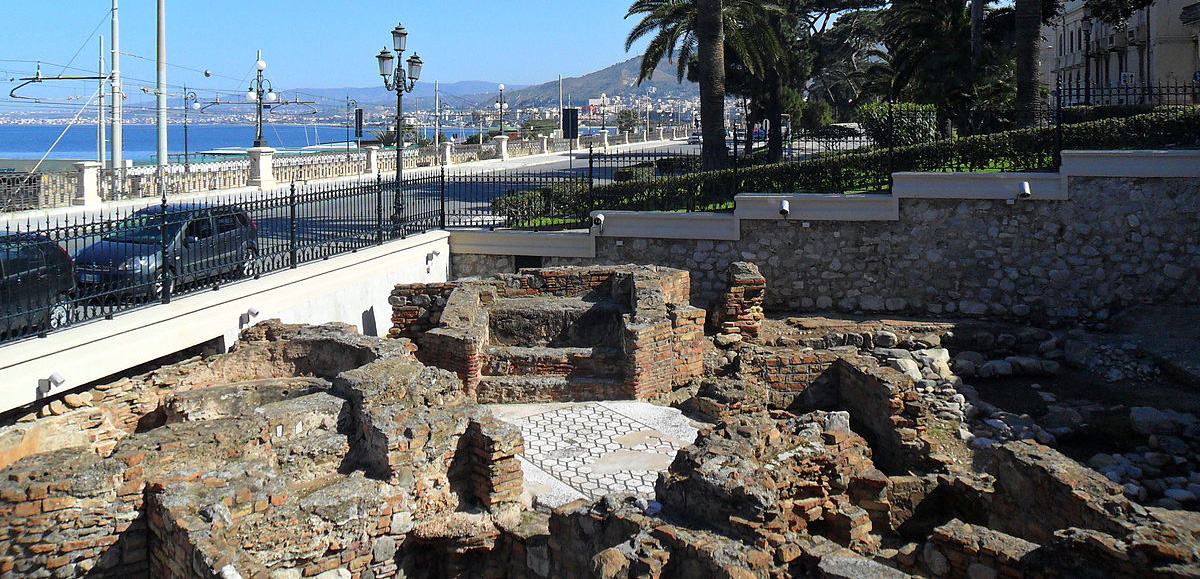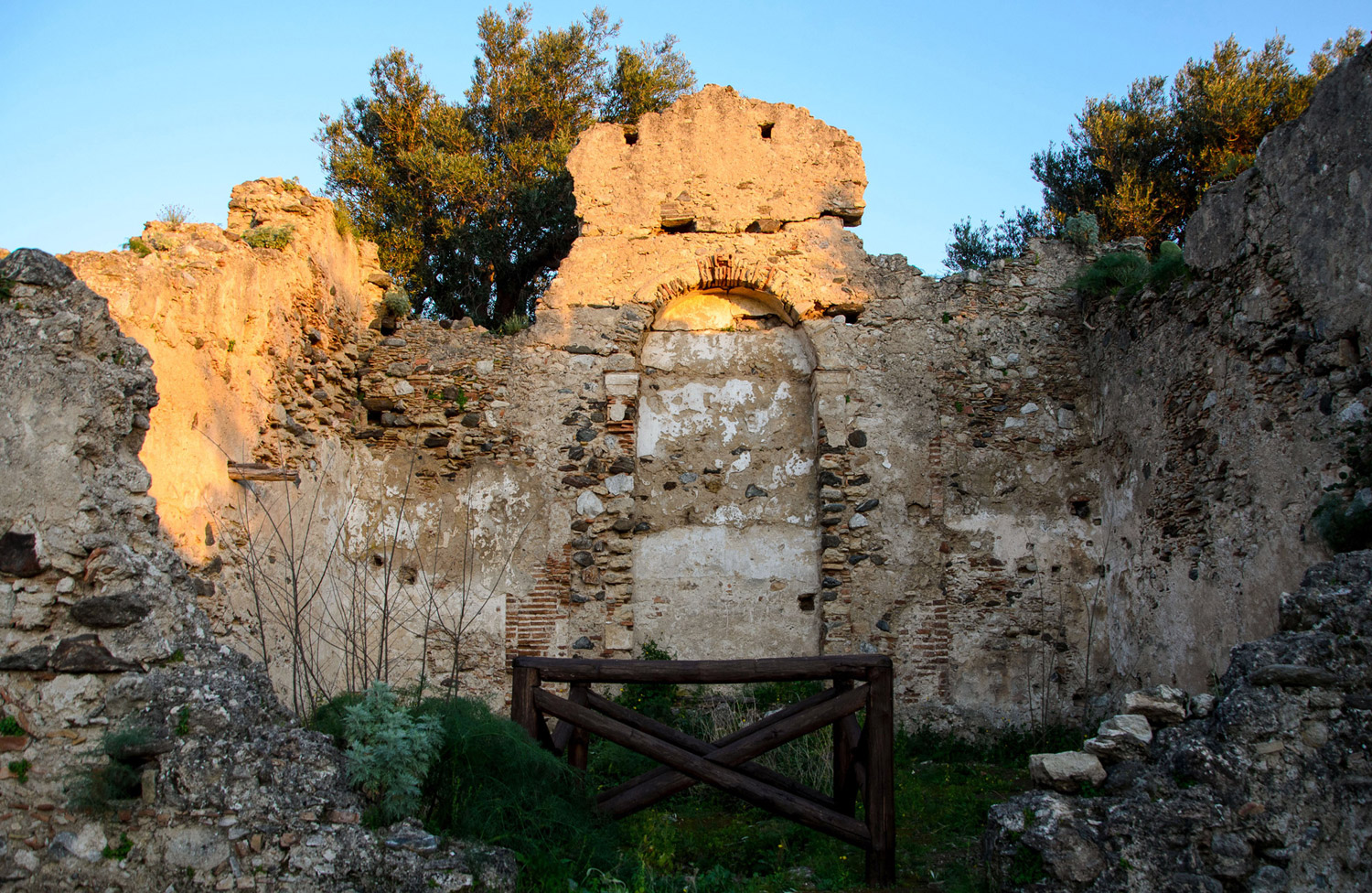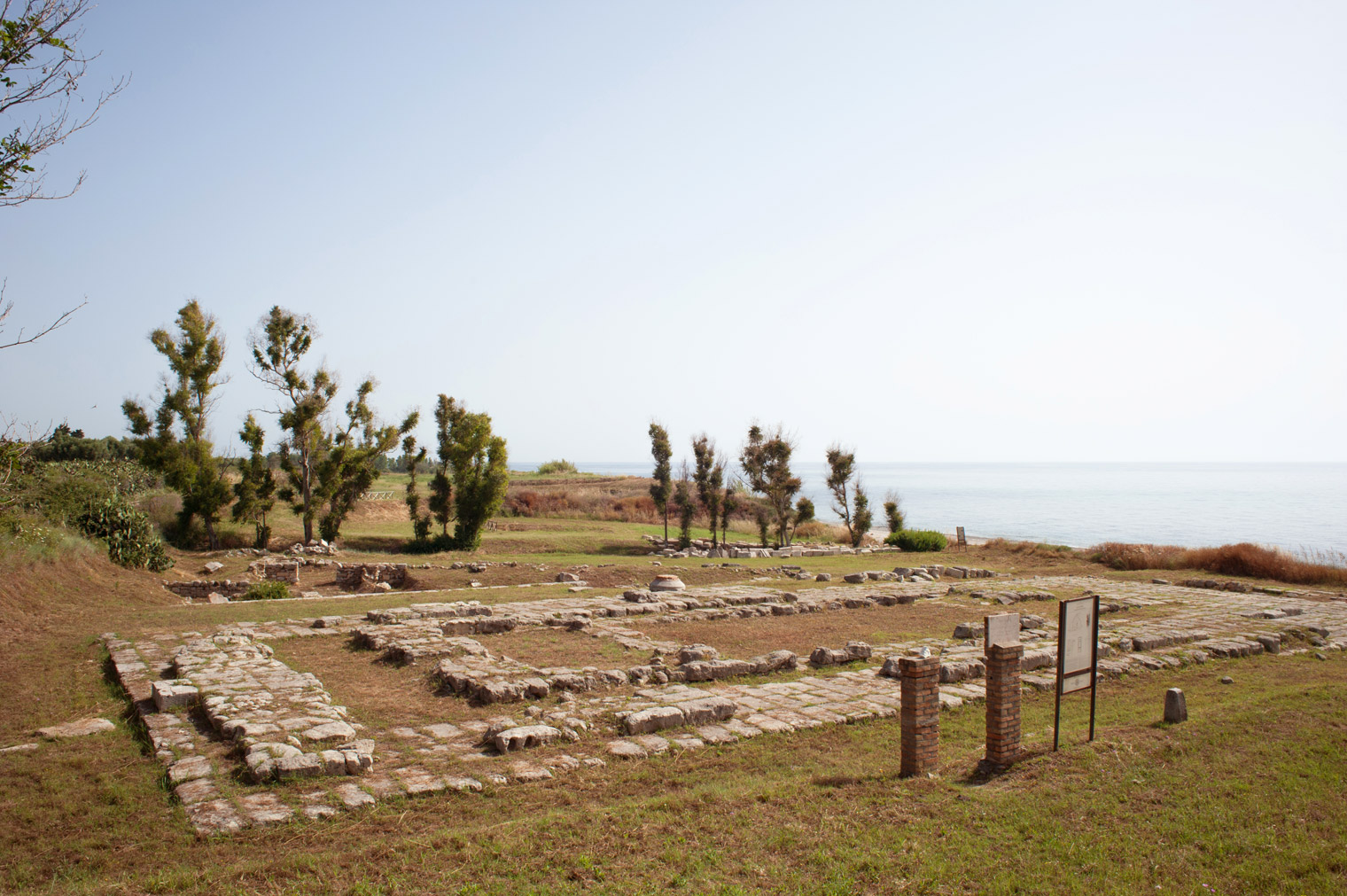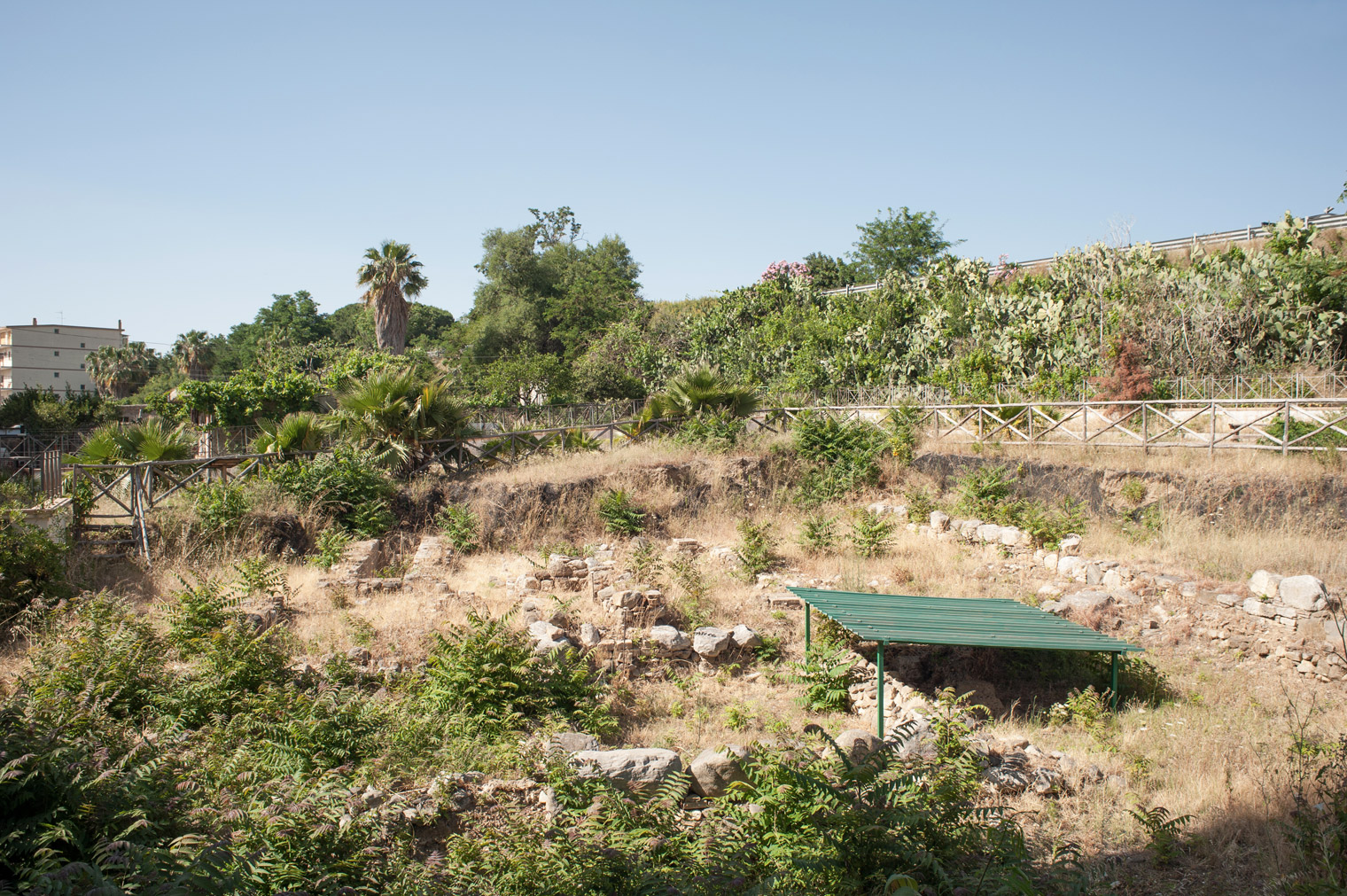The metropolis of Rhegion, like most of the colonies of Magna Graecia, was surrounded by walls to protect the city. The Archaeological Park belonging to the Collina degli Angeli (Angels’ Hills) provides perhaps the oldest evidence of these defensive masonry works, which have been handed down to us.

From the Collina degli Angeli to the Trabocchetto
The stretch of city walls in Collina degli Angeli (Angels’ Hills), which is a compelling comparison with the bordering wall of the Greek city of Gela in Sicily, dates back to the end of the 5th century BC and was discovered in 1976 during construction work. Made entirely of raw bricks, with dark earth mixed with straw and ceramic debris, it is about 15 metres long, has a thickness of over 4 metres, and in ancient times ran along the crest of one of the hilly ridges that closes off the city. Other remains of the wall are found further south, in the town of Trabocchetto, which appear to be the continuation of the implant located in Collina degli Angeli (Angels’ Hills).
DID YOU KNOW THAT …?
In this area, inscriptions in Greek characters have been found, most likely in the Oscan language—a Campanian dialect typically used by mercenaries working for the Greeks of Reggio—as well as a votive shrine depicted a winged victory.
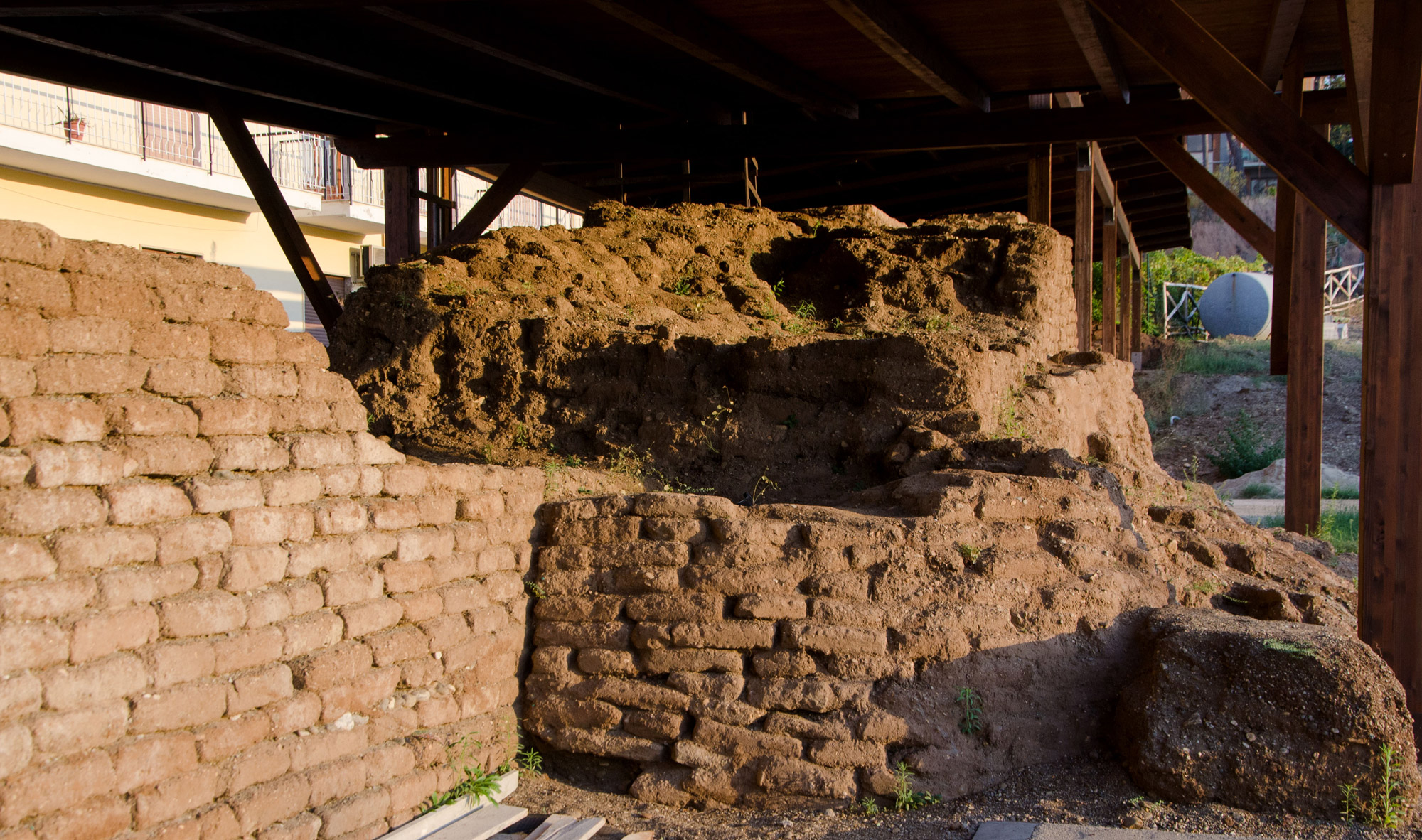
Mura Ellenistiche della Collina degli Angeli
Via Villini Svizzeri, 33, 89126
Reggio Calabria
